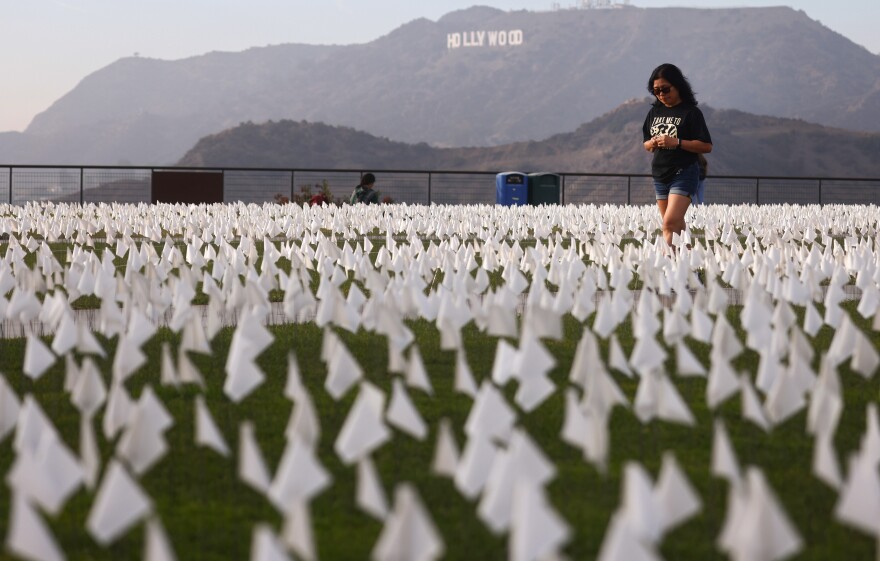Truth matters. Community matters. Your support makes both possible. LAist is one of the few places where news remains independent and free from political and corporate influence. Stand up for truth and for LAist. Make your year-end tax-deductible gift now.
Where Things Stand With COVID-19 In LA And California

With the World Health Organization officially lifting the Public Health Emergency of International Concern (PHEIC) for COVID-19 on Friday, here's a look at the overall status of COVID-19 and what's happening locally.
What has the impact been?
Tedros Adhanom Ghebreyesus, WHO's director general, announced the emergency on Jan. 30, 2020, when there were fewer than 10,000 cases of the virus. More than three years later, the pandemic has now killed nearly 7 million people globally, including more than 1 million in the United States.
In California, more than 101,700 people died, 36,200 of them in L.A. County, according to public health officials.
Are there still COVID cases in L.A.?
COVID-19 numbers remain stable and low in L.A. County. The weekly reported case count dipped to 2,533 compared to 2,659 last week, though those numbers are undercounts due to home tests. The average number of COVID hospitalizations is 266 this week, similar to the 275 reported last week.
Reported weekly deaths also remained stable at 51 deaths this week, similar to the 54 deaths reported last week. Another pediatric death was reported by Public Health, marking the 25th pediatric death from COVID in L.A. County.
What's the status of other COVID emergencies?
On May 11, the U.S. COVID-19 public health emergency will expire. A separate national emergency was also set to expire, but was rescinded early by President Biden.
Local public health emergencies in California and Los Angeles County have already been rolled back.
What changes when the public health emergency ends?
Congress has denied the Biden administration's requests to fund more COVID tests and vaccines, so the portion that affects most Americans has already been curtailed. When existing supplies already paid for with federal dollars run out they will not be replaced.
Why California is different
State lawmakers effectively added six months to the federal public health emergency. That means most health plans are required to continue to pay for COVID tests, vaccines, and treatment, both in and out of network without prior authorization or cost sharing. This includes health coverage many get from their employers, as well as plans managed by Medi-Cal and Covered California. After it expires Nov. 11, most insured people in California will only have cost sharing if those services are provided out of network.







